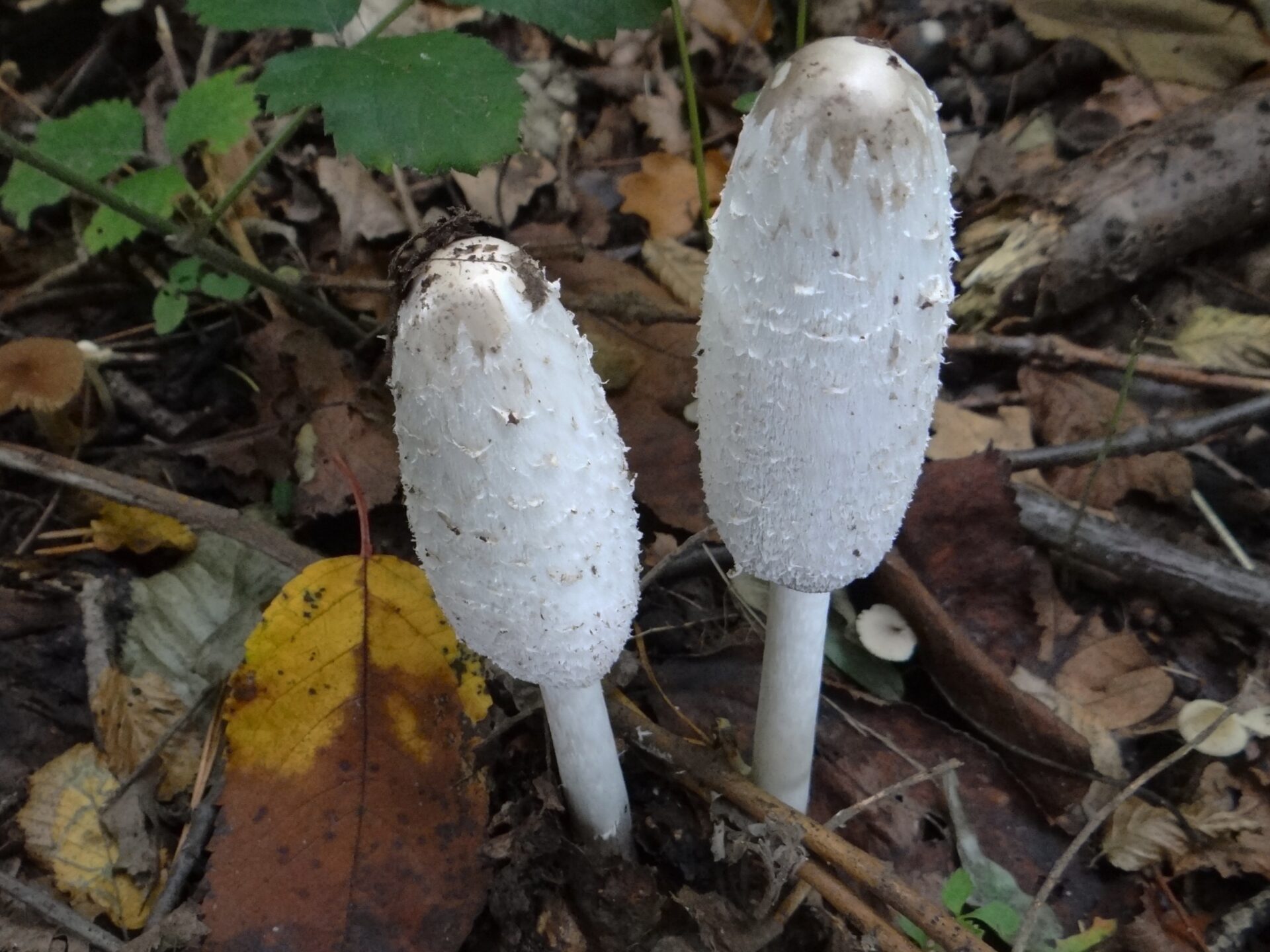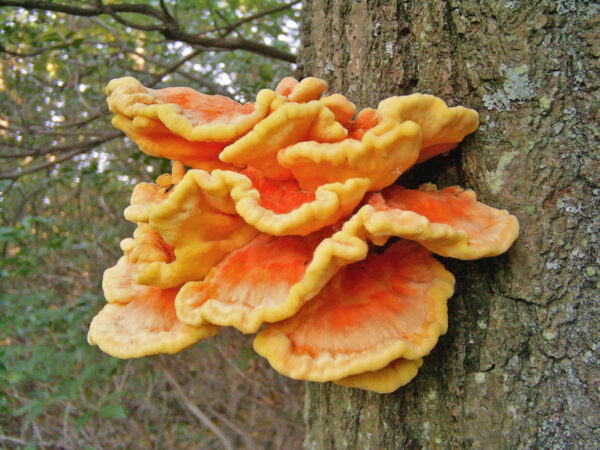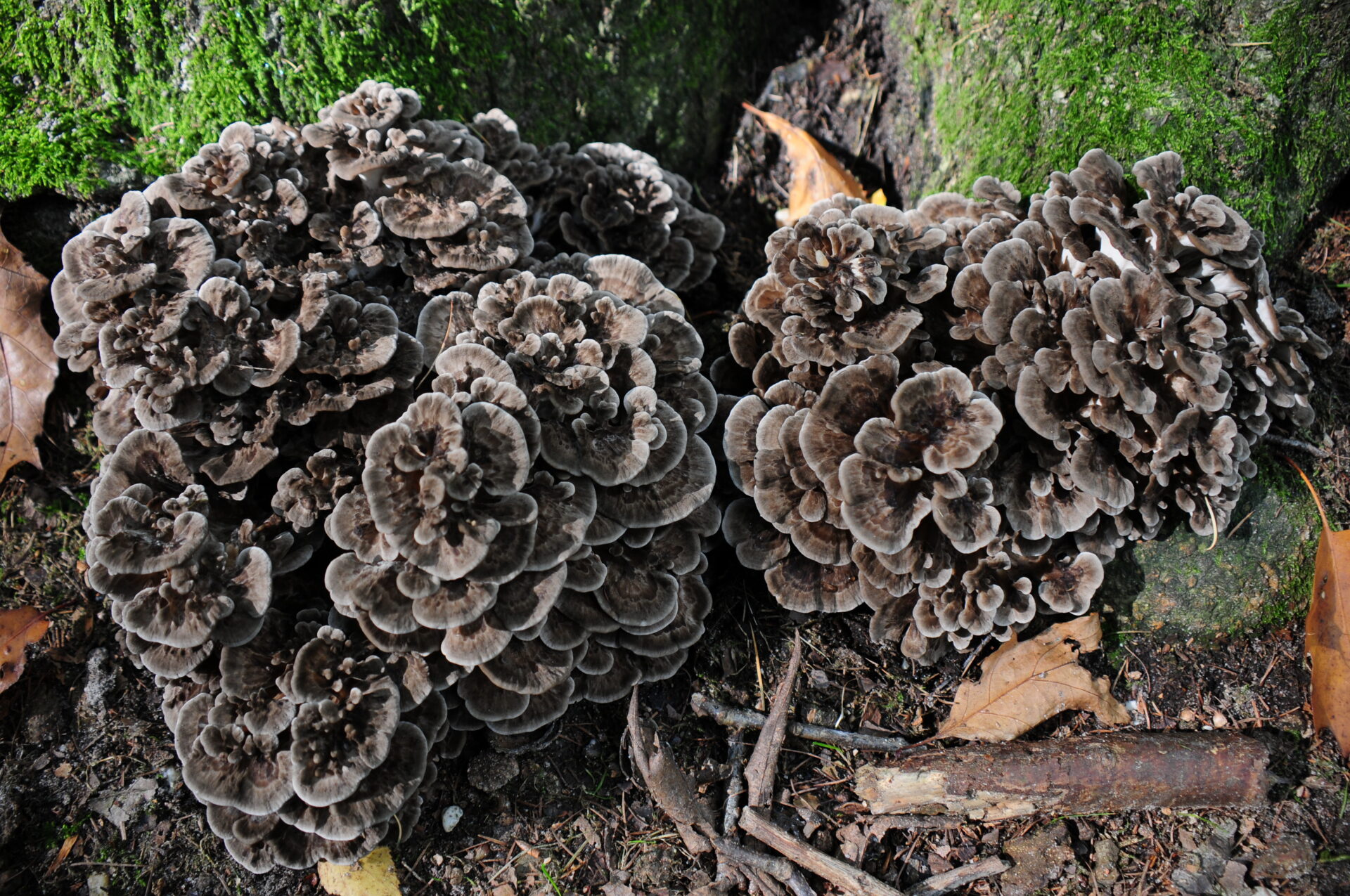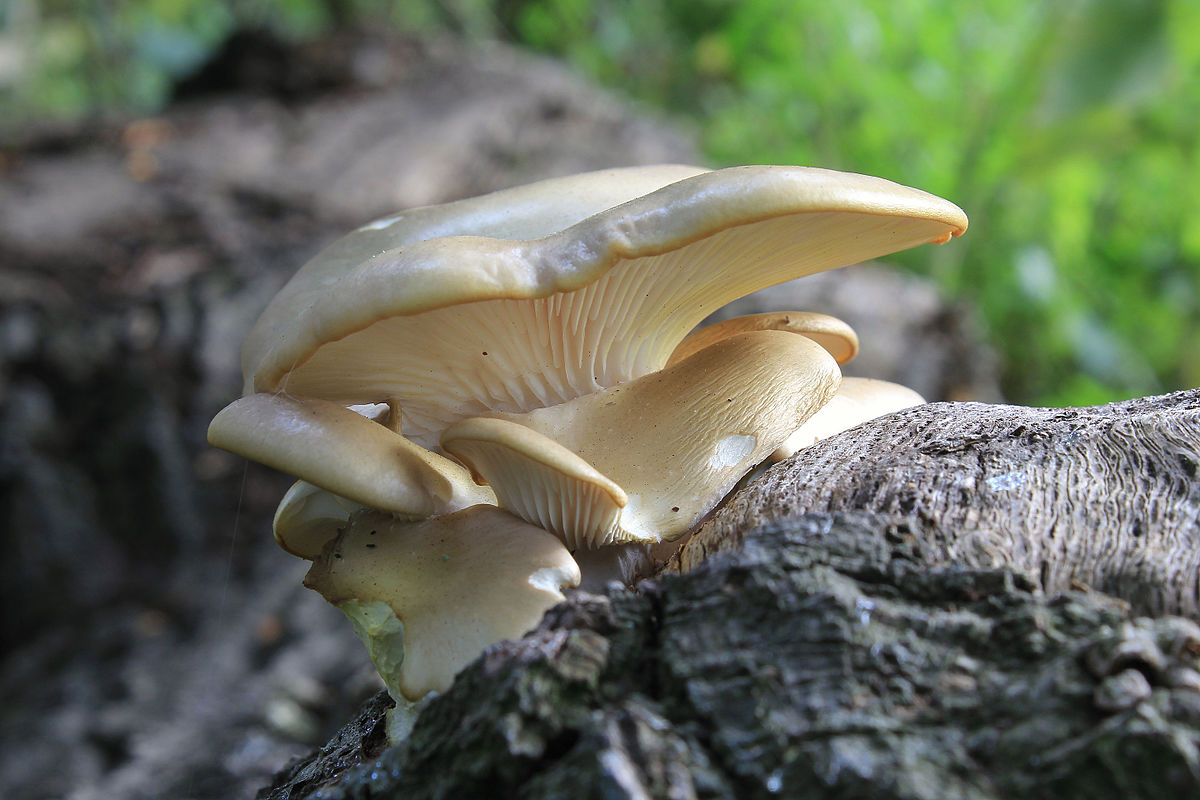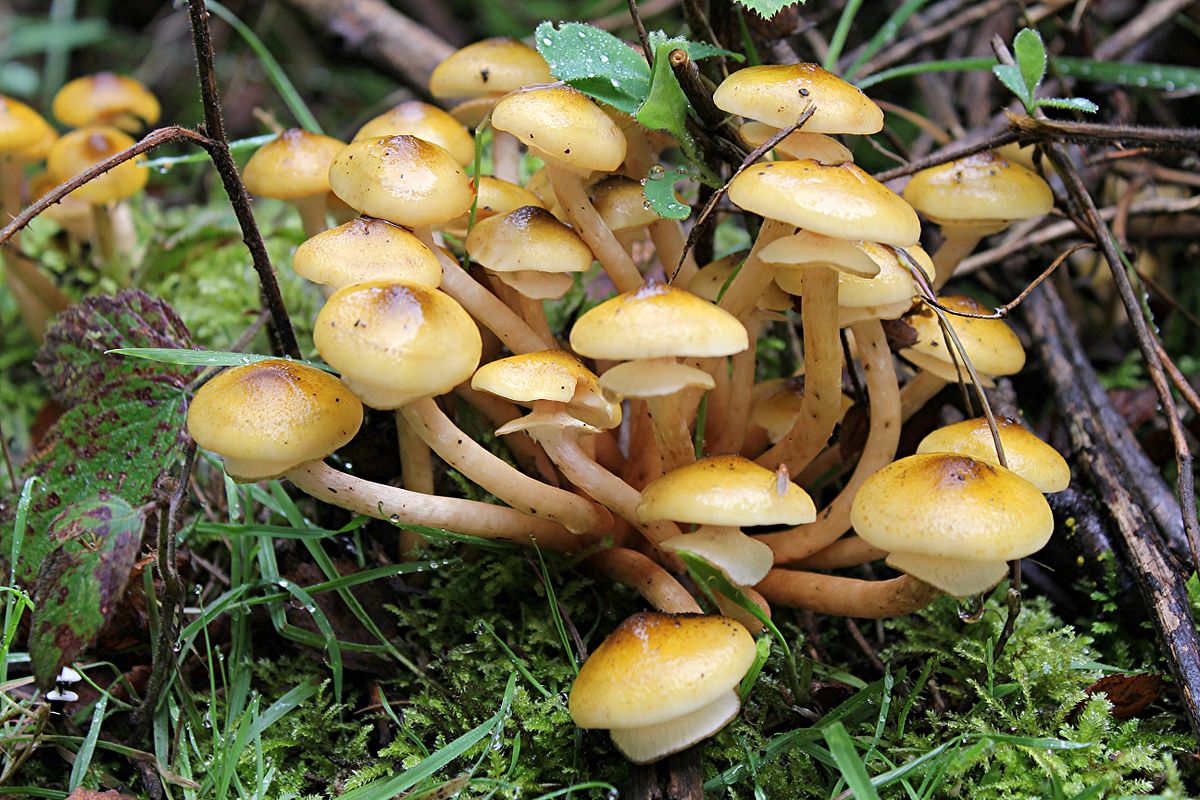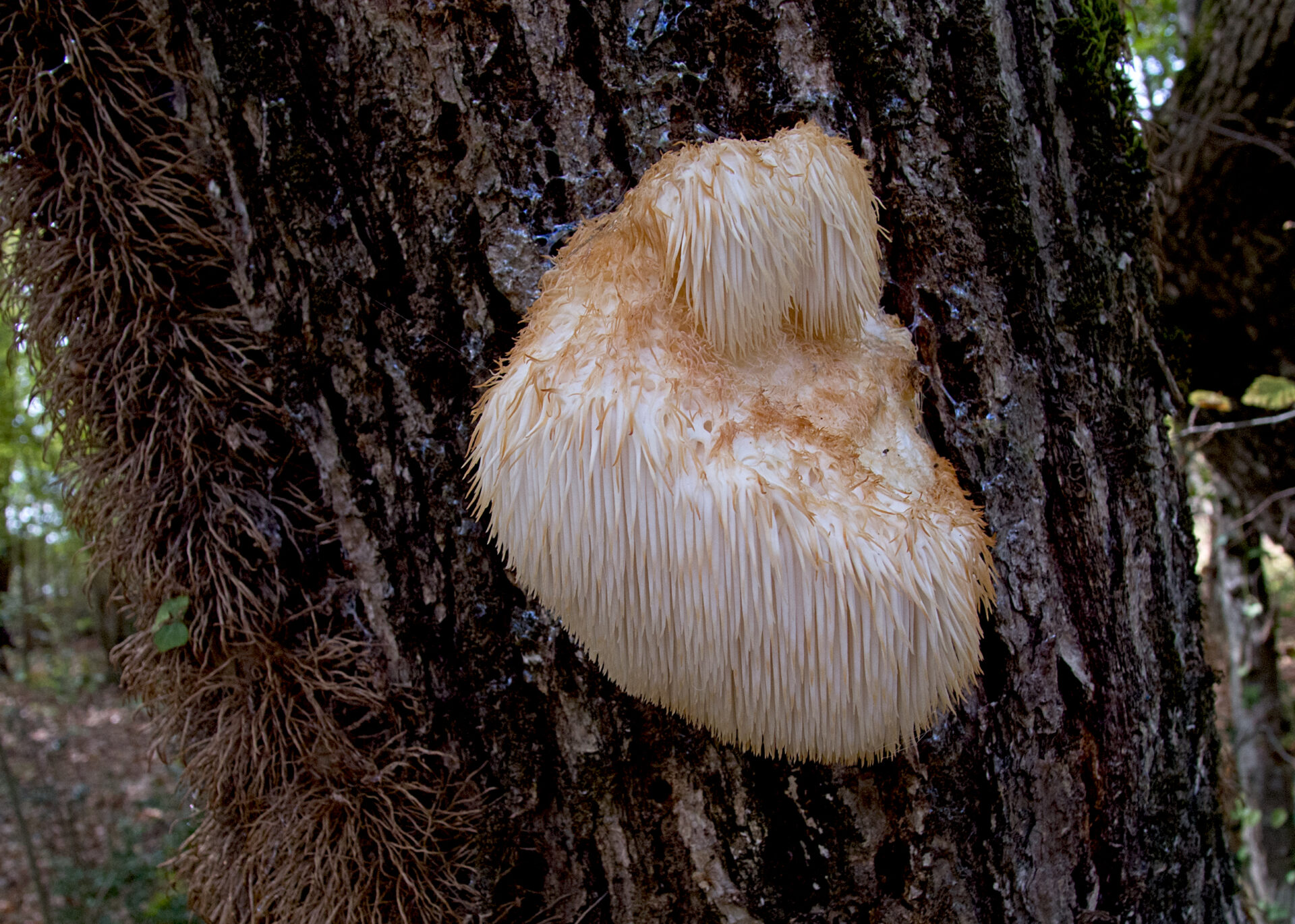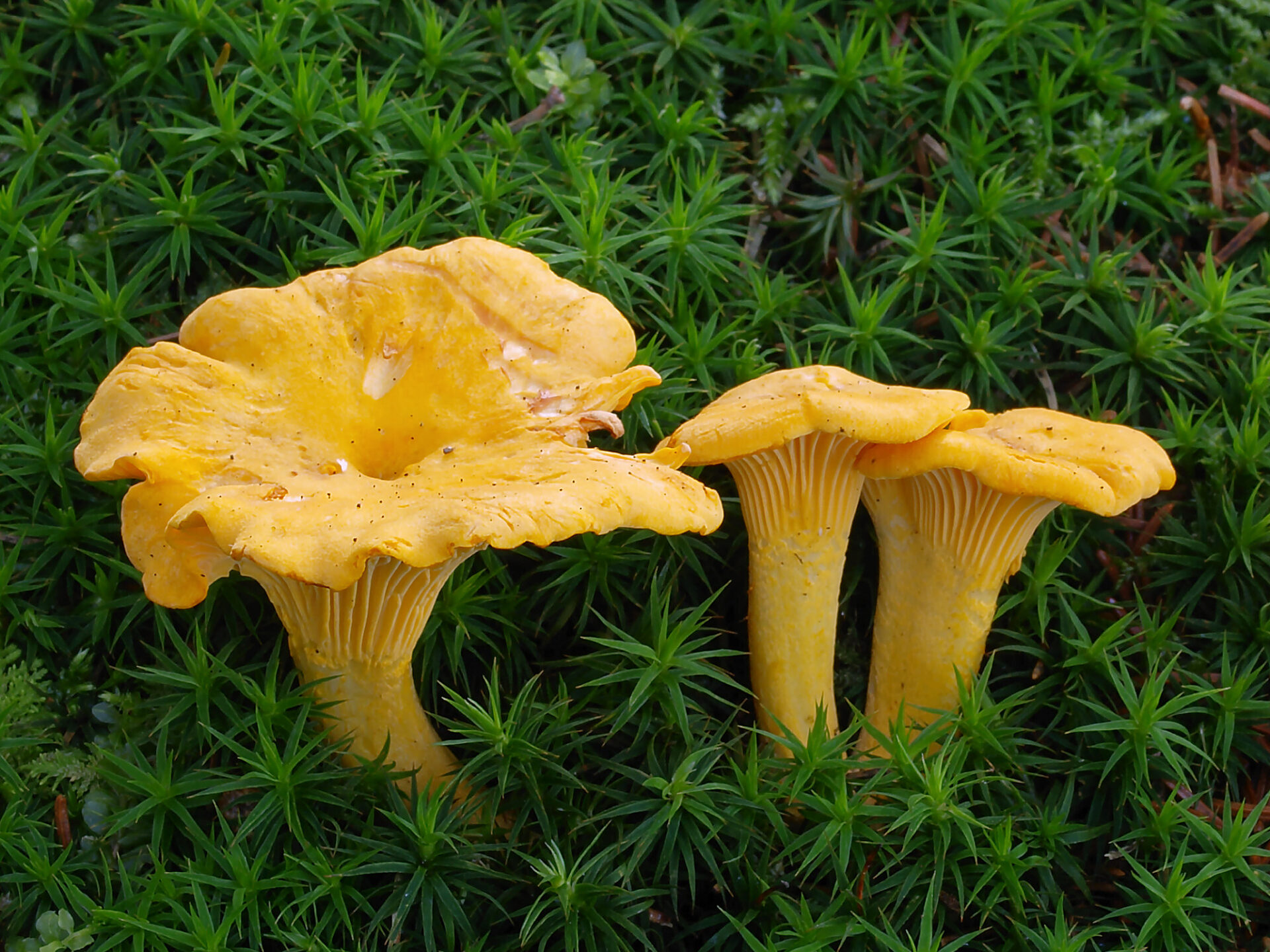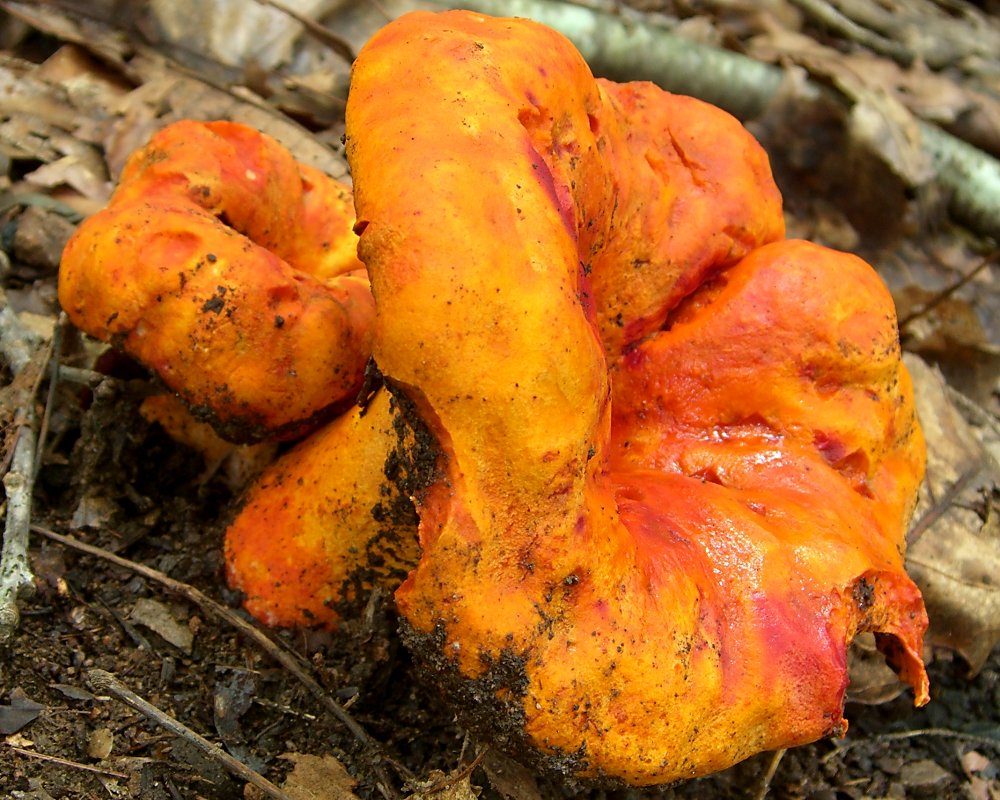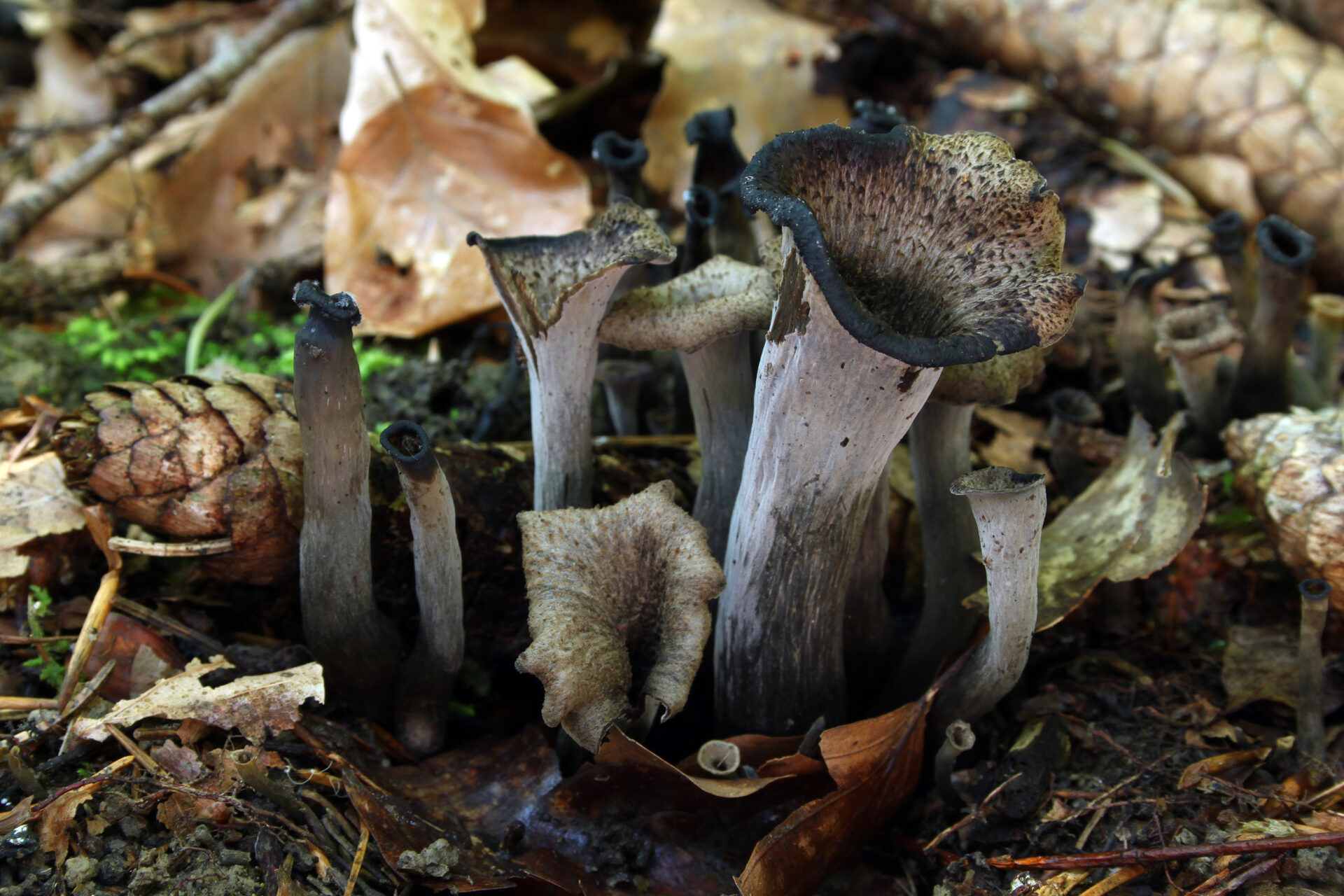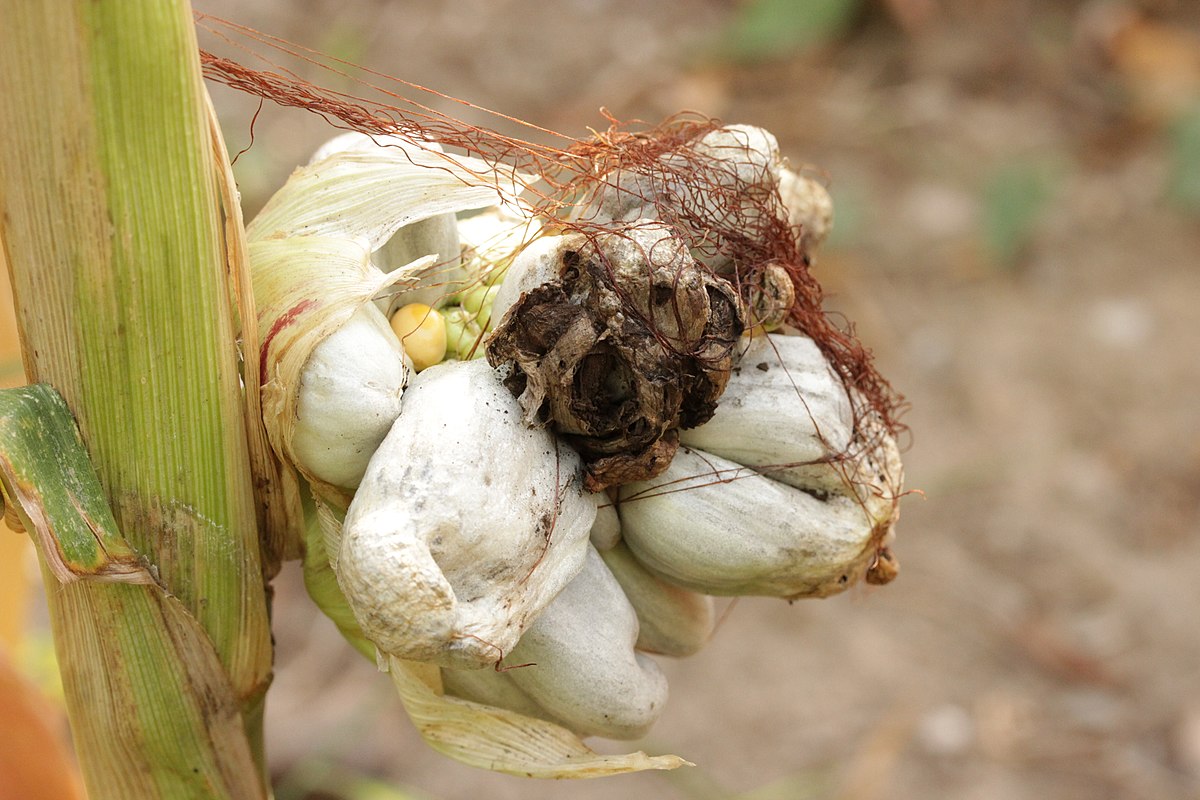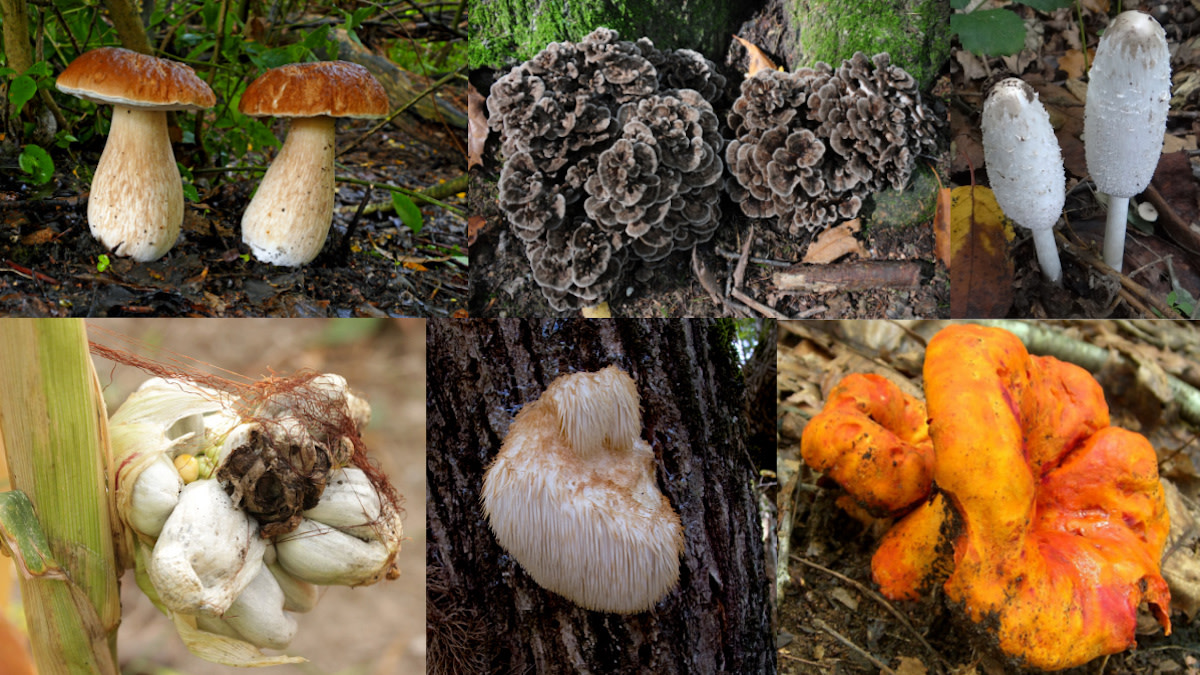
Most mushroom hunters call it quits after morels stop popping in spring, but that shouldn’t be the case. Edible mushrooms can be foraged year-round (even winter), and the mild temperatures of fall inspire growth that’s second only to spring. Here are 12 edible, wild mushrooms to look for this autumn.
Puffball Mushrooms
Identification: Puffballs are possibly the easiest mushroom to recognize from this list. That's why they're considered one of the "foolproof four"—a group of wild mushrooms that are easy to identify and don’t have many inedible lookalikes. You’ll find them as small as a baseball and as big as a basketball. Immature varieties of other mushrooms can look like a puffball on the exterior, but you can cut them open to be sure. If the flesh is totally solid from one end to the other, then it’s a puffball. If there is any kind of hollow area, stem, or cap, then it’s something else.
When: Puffballs will grow from spring to fall. Like most mushrooms, they’re most likely to appear after a shot of rain and mild to warm temperatures. If you’ve found puffballs in spring or summer, you can find them in those same places in fall.
Where: Puffballs grow everywhere but seem to favor disturbed areas. I’ve found them in open pastures and dense forests, so there’s no telling where this fungus will show up.
Preparation: A quality puffball will have solid white flesh. If there is any hue of purple or black, either trim around those areas or toss the whole thing. Puffballs are often referred to as the breakfast mushroom because they pair so well with omelets and breakfast burritos. I use them as a complimentary mushroom on burgers or in pasta, but they can also be turned into imitation pizza crusts or mozzarella sticks.
Shaggy Mane Mushrooms
Identification: Shaggy manes aren't part of the foolproof four— but they could be. These ones have a distinct, scaly, conical cap that resembles a British barrister’s wig. Once they start to age, they’ll develop a black goo that starts at the bottom of the gills and works its way up.
When: Shaggy manes have one of the longest growing seasons of wild mushrooms, making appearances from spring to fall. They predictably appear after precipitation.
Where: This is the most likely edible mushroom to appear in your backyard. Shaggy manes love disturbed areas like bike trails, ditches, soccer fields, parks, boat ramps, game trails, etc. They’re more likely to grow in the open than dense cover.
Preparation: Shaggy manes have a very delicate flesh and shorter shelf life than other wild edibles. Cook them within hours or days after harvest and use them on steaks, on burgers, in pastas, in soups, or in stir fry.
Chicken of the Woods Mushrooms
Identification: Chicken of the woods are another one of the foolproof four, meaning there isn't really a chicken of the woods look alike. They get their name because of their rooster-like vibrant colors that are easily spotted in the woods. They exclusively grow on trees or out of the ground above roots. Some people refer to them as the “sulfur mushroom.” They sometimes grow in massive clusters too big for one person to harvest.
When: Chickens are quite seasonal based on region. I often find them in late August to early October in the Great Plains, but in other parts of the country they’ll grow as early as April and as late as November.
Where: Chickens are most likely to appear on freshly dead trees. The trees can be standing or fallen. On standing trees, you’ll often find them at waist height or lower, but I’ve also seen them 20 feet up.
Preparation: Chickens are a hardy mushroom, which allows you to use them in a number of cooking applications. In the vegan world, these are a favorite substitute in any recipe that calls for chicken or tofu. I like them as chicken of the woods alfredo, chicken of the woods noodle soup, and chicken of the woods stir fry.
Hen of the Woods Mushrooms
Identification: Hen of the woods are the female counterpart to chicken of the woods (not literally, just in namesake). They grow in similar areas and have a similar shape, but lack the flamboyant colors. They grow in a large rosette with spoon- or fan-shaped caps that are tightly stacked. They’ll often be tan or cream colored. Some foragers refer to them as maitake, ram’s head, or sheep’s head.
When: Hens can appear from spring to fall but are most common in late summer and early fall. They are most likely to grow after a rain event and warm weather.
Where: Hens aren’t exclusively found on oak trees, but almost. They’re usually found at the base of hardwood trees and old stumps.
Preparation: Hens are one of the finest wild mushrooms you can find. They are hearty like chicken of the woods and can be used as a chicken substitute in any recipe. Their meaty texture makes them one of the easiest mushrooms to use in soup.
Oyster Mushrooms
Identification: Like chicken or hen of the woods, oysters exclusively grow on trees. Unlike chicken or hen of the woods, oysters have gills. They often grow in smaller clusters with a flat, fan-shaped appearance. Their colors don’t vary much; they’re almost always white.
When: Oysters are most likely to appear after a good rain and mild temperatures. They’ll start showing up about the same time as morels, but will make appearances into fall.
Where: Oysters often grow on dying or dead hardwoods, like sugar maple and beech. They’ll grow on standing or fallen trees. They’re a common mushroom to find along waterways.
Preparation: Oysters are one of the few mushrooms from this list that you’ll find at the grocery store. They don’t have much for flavor but do have a great texture. Use them as a complimentary mushroom to meats, pastas, soups, and stir fry. Oysters are a popular choice for Asian cuisine.
Honey Mushrooms
Identification: Honeys have a pretty bland appearance. Their cap is smooth with gills attached to the stem or beginning to run down it. Their name comes from their color, not their taste—honey mushrooms will be white to slightly pinkish. They’ll grow in clusters and the stems will appear to originate from the same spot. Honeys have a variety of inedible lookalikes (some are even toxic). This isn't a beginner mushroom—make sure you know exactly what you're taking home.
When: They are found pretty much year-round in warmer climates, but more often show up in fall after rain.
Where: They’re most common in the Midwest and on the coasts. They’re often found around hardwoods that are rotting, dying, or dead, but will sometimes be found near wood chips or standing conifers.
Preparation: Some refer to honey mushrooms as slimy and unappetizing, but they still make for good table fare. You wouldn’t cook them to standalone like chickens or hens, but use them to compliment meats or vegetables.
Lion’s Mane
Identification: Lion’s manes are one of the ugliest edible mushrooms. They look like their namesake, along with their other monikers (bearded tooth mushroom and pom pom mushroom). They are white when fresh but turn yellow or brown when past their prime.
When: They show up in mid-summer and stick around through the end of fall.
Where: They exclusively grow on hardwood trees, specifically oak and beech. Unlike most other mushrooms that grow on wood, these are usually found higher up in trees rather than at the base.
Preparation: Lion’s manes have decent flavor and texture, but they’re more so sought after for their medicinal purposes. Many claim that they are good for brain health and help prevent dementia, Alzheimer’s, and Parkinson’s. Cook them for longer than most mushrooms because they contain so much moisture that takes plenty of time and heat to sweat out.
Chanterelle Mushrooms
Identification: Chanterelles are one of the most highly regarded wild mushrooms. They’re quite recognizable with their bright orange and yellow coloration. Some claim that they have a fruity smell that’s most often described as apricot. Jack-o-lantern mushrooms are very toxic and look somewhat alike, but the similarities end at color. Confusing a chanterelle for a jack-o-lantern is like confusing a deer for an antelope.
When: Chanterelles will show up as early as late spring but are more common in late summer and early fall.
Where: Chanterelles grow in mature forests and are most common around maple, beech, poplar, birch, pine, fir, and oak trees. They’ll often grow in sizeable clusters that are easy to spot from a distance. Look for soil that has a lot of moisture, like low spots and waterways.
Preparation: These are some of the easier mushrooms to work with in the kitchen. They clean easily and can be used in a ton of applications. Because of their vibrant color and great taste, I like to make them the focus of a dish—sautéed in a pan as an appetizer or loaded on top of a slice of wild game.
Lobster Mushrooms
Identification: Lobsters rank right up there with chanterelles and chicken of the woods for aesthetics. They have vibrant orange flesh that resembles cooked lobster meat. Their cap and stem are irregular and inconsistent. Not many other fungi look like them.
When: Lobsters start showing up as early as July but are more common in September and October. They have a pretty short shelf life compared to other mushrooms on this list.
Where: These mushrooms most commonly grow around trees (hemlock is a favorite). If you find lesser known Russulas or Lactarius, there are likely lobsters nearby.
Preparation: Another reason they’re called lobster mushrooms is because their aroma is somewhat like seafood. I think you have to use your imagination to smell that, but many stand by this assertion. Lobsters are a meaty mushroom, which is great because they often take a lot of trimming to remove soil and mold. These mushrooms are common in dishes that call for white wine.
Bolete Mushrooms
Identification: There are about 300 species of bolete and nearly all are edible. There are a couple that are better than others, like the king bolete, admirable bolete, and aspen bolete. Some foragers refer to them as porcini. They have a bulbous stem and large cap that are typically natural colors like tan and brown.
When: Boletes can be found spring through fall, but are most common in late summer and early fall.
Where: Boletes grow in mature forests. They’re found near a variety of trees like pine, spruce, hemlock, fir, red cedar, aspen, and birch.
Preparation: Boletes are notorious for housing creepy crawlies. It’s not uncommon to pick a bolete that is filled with worms and insects, rendering them inedible. Usually you’re able to find enough to salvage any harvest, though. Boletes are great for any cooking application, including dehydrating.
Black Trumpet Mushrooms
Identification: Black trumpet mushrooms don’t look like much else on this list. They don’t have gills or other visible spore-bearing structures, and their shape would be best described as the instrument they’re named after. Despite their moniker, they’re often brown or gray in color. Some people refer to them as black chanterelles.
When: Black trumpets are found in summer and fall throughout most of their range. In warmer regions, they’re common in winter. They often show up after a rain.
Where: They grow around decaying material and trees. Black trumpets are most common in wooded areas near oak and beech trees. These are tough to spot because of their color, but if you see moss or other mushrooms, there’s a good chance trumpets are nearby.
Preparation: Despite their appearance, black trumpets don’t have very delicate flesh. Some describe their flavor as rich and smoky. You’ll want to use them as a complimentary mushroom in dishes that have other strong flavors, like soups, sauces, and seafood recipes.
Corn Smut
Identification: Corn smut grows on ears of corn. You can easily see it on the outside of the husk—fresh corn smut will be white, while old corn smut will be black. There are no look-alikes to confuse it with.
When: It’s common when the corn is stressed out following a hail storm, wind storm, drought, or some other event. It most often shows up in late summer but can stick around into fall.
Where: It’s found on any variety of corn. Look for stressed out stalks that are most common on field edges exposed to wind or high spots that don’t get as much moisture. It’s found throughout North America.
Preparation: You only want to pick smut that is white and firm. There is usually minimal cleaning involved. It’s a delicacy in Mexico and most often eaten in quesadillas, tacos, and soups. You need to prepare it within a few days of harvest.
Images via Wiki Commons.


